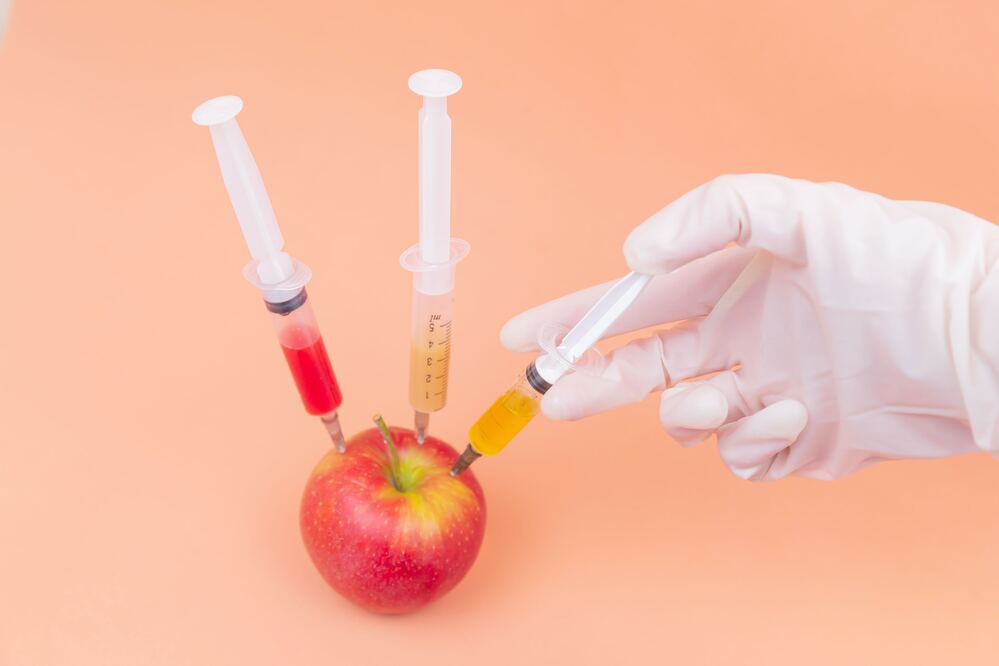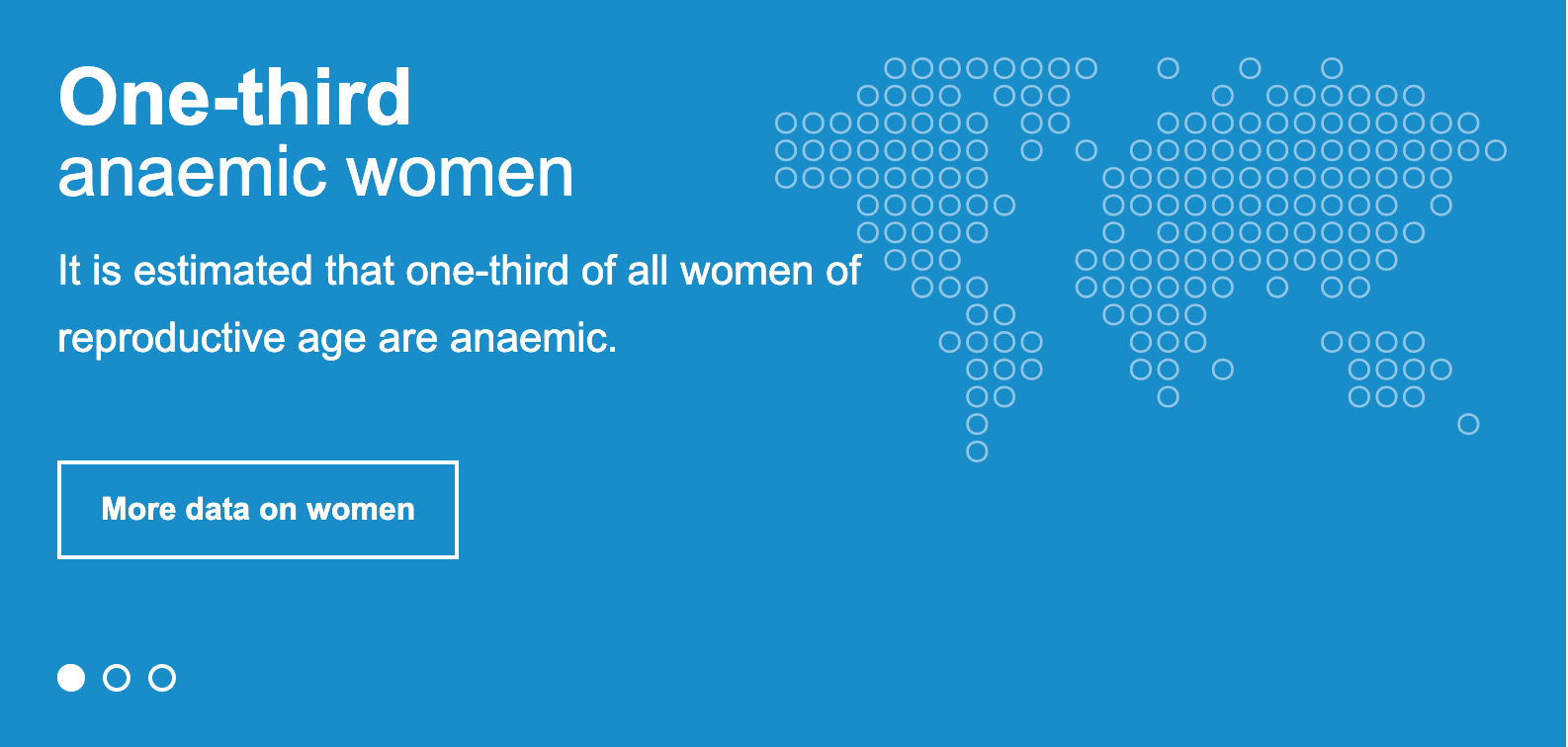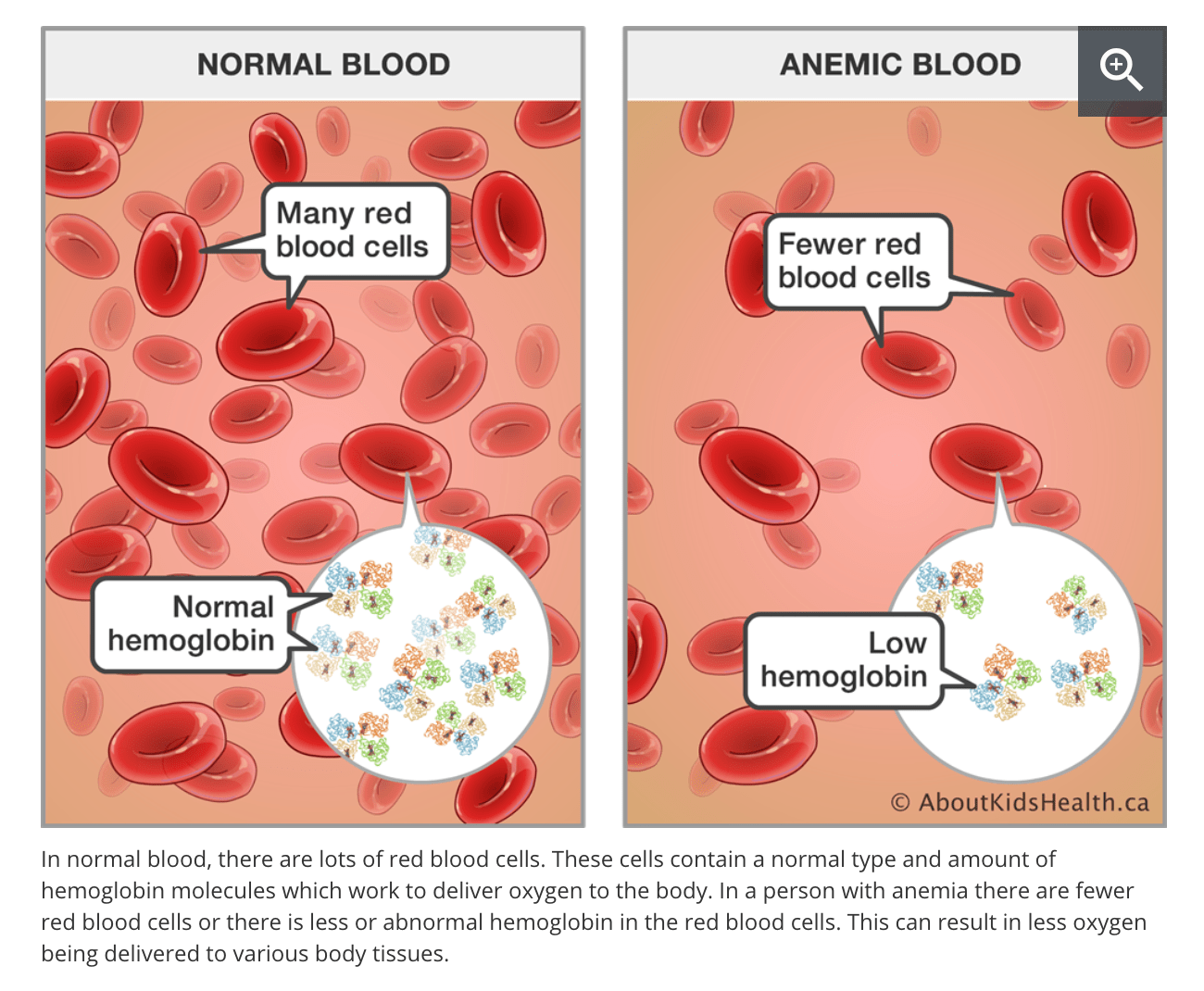December 5th, 2021

Did you know, anemia affects 1 in 4 individuals globally? Anaemia is a serious global public health problem that particularly affects young children and pregnant women. The WHO estimates that 42% of children less than 5 years of age and 40% of pregnant women worldwide are anaemic.

Wait, what is anemia?
The word anemia is derived from Ancient Greek, meaning "lack of blood". Our blood brings oxygen and nutrients to all the parts of the body so they can keep working. After "delivering" oxygen to our organs, our blood then carries carbon dioxide and other waste materials to the lungs, kidneys, and digestive system to be removed from the body.
Iron deficiency anemia (IDA) is the most common form of anemia; it is caused by a decrease in red blood cell production due to not having enough iron in the body. Iron is needed to produce hemoglobin (Hb), which oxygen binds to. When our body's tissues does not get enough oxygen, it may make us feel tired, weak, or cranky. This type of anemia is common in menstruating or pregnant women.

While iron deficiency anemia is the most common type, there are other types of anemia as well:
What are some signs and symptoms of anemia?
At first, the signs and symptoms of anemia may be mild or unnoticeable. But as the body becomes more iron deficient, they become more obvious, including:
How do I know if I have anemia?
In order to determine if you have anemia (and what type), your healthcare provider will order a Complete Blood Count (CBC) as well as some other tests. If your Hb is low, they will then look at the characteristics of your red blood cells (e.g. size) to determine the type of anemia you have. The threshold for diagnosing anemia (Hb levels) differ between males and females. There are also other medical conditions which may present or cause anemia - so additional tests may be ordered in order to diagnose what the issue is.
Where do I get iron?
Iron is naturally available in the foods we eat, and there are two main types — heme (animal-based) and nonheme (plant-based) iron. For women, how much iron we need depends on our age and stage of life (e.g. menstruating vs. menopausal) but may range from between 8-27 mg/day. The daily iron needs for men > 18 years old is 8mg per day.
You don't have to be diagnosed with anemia to make sure you're getting enough iron in your diet.
Iron is an essential element for blood production. About 70 percent of our body's iron is found in hemoglobin and in muscle cells called myoglobin; it is essential for oxygen transport. Iron is also a component of certain proteins in our body that is essential for breathing and metabolism. It is also a component of enzymes involved in making collagen and some neurotransmitters. Lastly, it is also needed for proper immune function.
What's better - animal-based or plant-based sources of protein (for iron)?
Unfortunately, there isn't a simple answer to this question. How we eat is rooted into our identity; our ethics and beliefs often impact how we feel about the source of our food, including protein.
However, I believe the best sources of protein are:
The top 5 sources of heme based iron (as per 3 oz. serving) are:
Heme (animal) sources of iron also include fat (an essential macronutrient) and are considered to be complete sources of protein because they contain all of the essential amino acids that your body needs to function effectively.
The top 5 sources of non-heme based iron are:
In order to get the complement of essential amino acids from plant-based protein, you will need to combine 2 different sources of protein (e.g. lentils and tempeh) together. Most individuals are able to meet their iron requirements from a plant-based diet if they eat a variety of whole foods. Plant-based sources of protein also contain vitamins, minerals, and fibre which may not be found in animal sources of protein!
Supplements:
If you have been diagnosed with iron-deficiency anemia, your primary care provider may prescribe over-the-counter iron supplements for you. Oral iron supplements are available as a liquid formulation or tablets; they typically differ in the amount of elemental iron it contains. The most common iron supplements are:
With iron supplements, the most common side effect include dark stools, constipation, nausea, diarrhea, and stomach upset. Certain medications, food, and tea, may also decrease iron absorption.
Wait, why is the amount of elemental iron so high in these supplements when our daily requirement needs are only between 8-27mg?
This is because iron salts are very poorly absorbed and may interact with other minerals and foods. You may only absorb 20-30% of the elemental iron in the above formulations.
There are also newer iron formulations such as FeraMAX (polysaccharide iron compound) and Proferrin (heme-iron). While there are claims of increased absorption and decreased side effects, these claims have not been proven.
What are some other ways to boost iron?
Lucky Iron Fish - According to their website, the Lucky Iron Fish/Leaf are cooking tools that boosts the iron content of any liquid it is boiled with. It is clinically proven to release safe levels of iron. When used as directed, it releases 6-8 mg of absorbable iron per 1L (4 cups) of liquid (such as soup, curry, or water with 2-3 drops of citrus). Using the Fish/Leaf regularly is a great addition to your daily diet to ensure adequate iron intake.
Cast Iron Cookware - While cooking with cast iron may increase the iron content of the foods prepared in that pan, researchers concluded that iron benefits from iron cookware are not highly significant, require more research, and would probably be most effective if combined with food-based strategies.
In summary, one in three women of reproductive age are anemic. Iron deficiency anemia is the most common type, but vitamin deficiency (i.e. B12 and folate) can also cause anemia. Iron can be found in animal-based (heme) and plant-based (non-heme) foods, and it is possible for most people to obtain their daily iron requirements through their diet. You can enhance the absorption of iron from meals by eating foods high in vitamin C along with it. Eating meat, fish or poultry with other foods can also help. While there are supplements available, it is important to first eat a variety of whole foods to meet one's iron needs. Although using the Lucky Iron Leaf/Fish or cooking in cast iron cannot replace a healthy diet or supplements, it's something to consider to maximize the iron content in the foods you eat.
- Janet
Copyright © 2021 JCL Wellness.
All rights reserved.